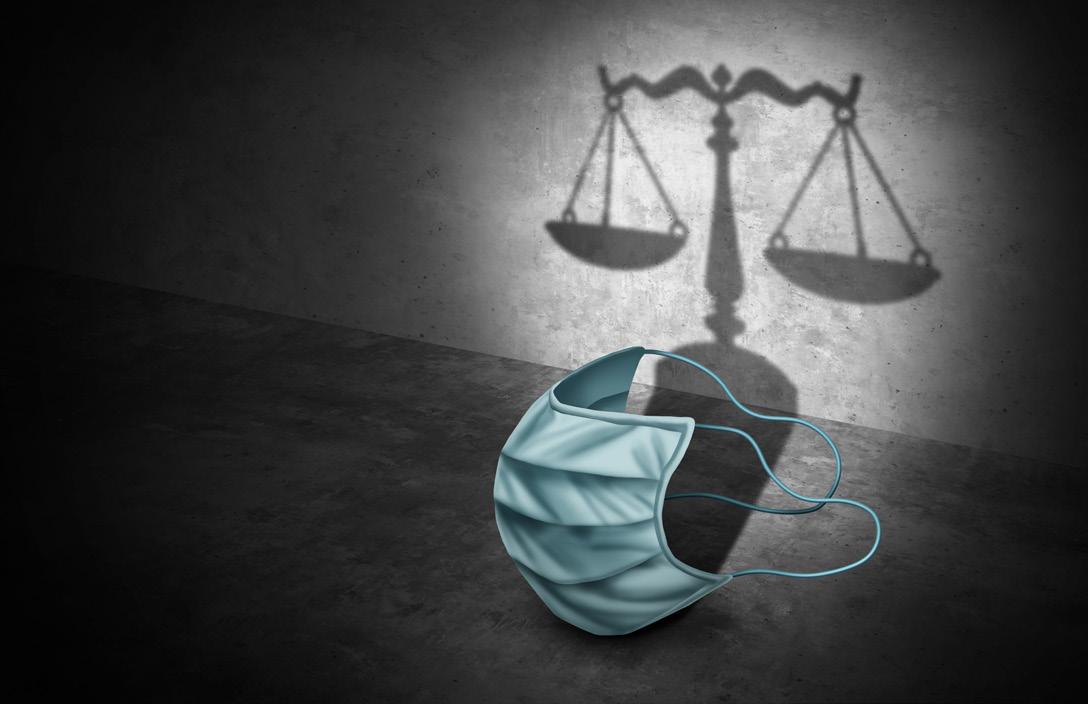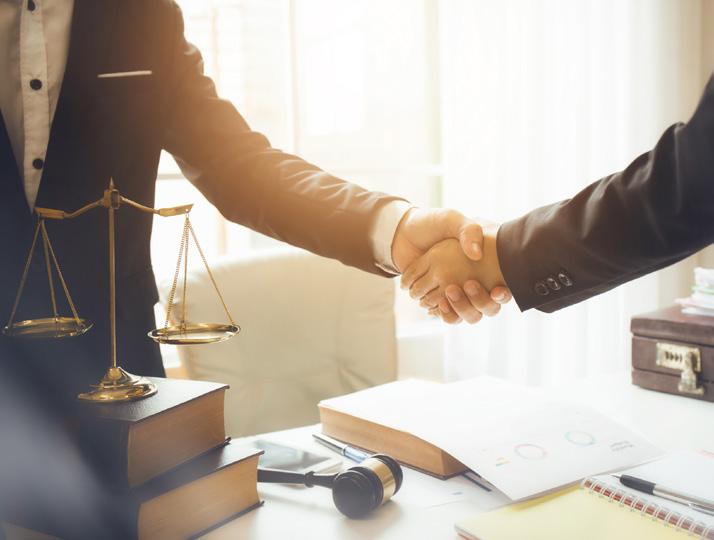
5 minute read
Lawyers and Justice in a Time of Chaos
The opinions in the below editorial do not necessarily reflect the views of the SCBA or the Editors of the Sacramento Lawyer magazine. The Editors welcome the submission of articles reflecting other views on this important topic in a future issue.
By Aaron N. Taylor
Advertisement
Aaron N. Taylor is executive director of the AccessLex Center for Legal Education Excellence in Washington, DC. He can be contacted at ataylor@accesslex.org.
The chaos of 2020 has brought forth the glaring need for justice in this country. The COVID-19 pandemic has impacted all of us, changing our lives and how we interact with each other likely forever. But the burdens and the most tragic outcomes of the pandemic have not been suffered equally. Infection rates have been highest among vulnerable populations, including people living in poverty, 1 people in nursing homes, 2 and incarcerated people. 3 Chances of infection and serious illness or death from COVID-19 can be tied directly to various inequalities that typify our country, most notably unequal access to healthcare. The foundational cause of all these trends is something else: racism.
Black Americans have the highest COVID-19 death rate, almost twice the rate of Americans overall. 4
In California, Black people account for 6% of the population, but almost 10% of COVID deaths. 5 No other racial or ethnic group experiences this level of disproportion. California is not alone. Cities and states across the country have reported similar, if not starker, trends. The trends are manifestations of the inequitable interplay between wealth status, health status, and race – which are reflections of systematic racism. 6 The disparate death rates are unsettling, but should not be surprising.
With the pandemic still raging, the issue of unjust police killings of Black men and women has returned to the forefront. The excruciating video of George Floyd’s life being suffocated away has sparked an activist movement unlike anything most of us have seen in our lifetimes. Protests of racism and racial violence against Black people have taken place in every state and the District of Columbia and have sparked similar protests around the world.
The protest movement is being undergirded by various public policy demands. The dominant premise is the ending and remedying of unequal and inequitable treatment of Black people and other marginalized people by sanction of law, policy, or practice. But the overarching demand is justice. Justice is a weighty notion that should inhabit law, policy, and practice. It is the theoretical premise of our way of life. It is the lifeblood of the rule of law. Indeed, justice is essential to the continued functioning of this grand democratic
experiment we call the United States of America.
It is often said that lawyers are guardians of justice. The Preamble of the American Bar Association Model Rules of Professional Conduct states: “A lawyer is a member of the legal profession, is a representative of clients, an officer of the legal system and a public citizen having special responsibility for the quality of justice 7 .” The last role is probably the most significant because it frames a lawyer’s justice responsibility as “special” and places it squarely within the context of a lawyer’s existence as a “public citizen.” This means that a lawyer never sheds her special responsibilities for helping ensure that our society is governed through just systems.
As lawyers, we should look at disparate COVID-19 death rates and the inequitable treatment of marginalized people throughout our society as justice issues. Race should not be a factor in determining odds of surviving a viral infection or a law enforcement interaction. But what can lawyers do? Many things.
The most important first step is to educate ourselves on the issues. Why are Black Americans more likely to succumb to COVID-19? Why are Black Americans more likely to be killed by the police? 8 These are not anecdotal or even random factoids. They are direct manifestations of systematic racism and individual biases – both implicit and explicit. As lawyers, we must first acknowledge and then be knowledgeable of the underpinnings of these issues, how they operate and how they manifest.
Next, we must work to dismantle unjust systems. Dismantling requires us to own up to the manners in which we often unwittingly contribute to injustice ourselves. Implicit biases are an example. We all carry biases with us, we must know what they are and actively work to counteract them. We must also focus on systems. Why do we have such dis1 https://www.npr.org/sections/healthparities in access to quality medical shots/2020/04/01/824874977/underlycare? Which systems are contributing-health-disparities-could-mean-coronavirus-hits-some-communities-harde ing to this form of injustice? Which systems contribute to the yawning 2 https://www.bloomberg.com/opinion/ wealth gaps and income disparities articles/2020-05-07/comparing-coronavi rus-deaths-by-age-with-flu-driving-fatal across different races and ethnicities? ities Again, these are not random trends. 3 https://eji.org/news/covid-19s-impactThey reflect systematic, intentional on-people-in-prison/ behavior that can be ended, but only 4 https://www.apmresearchlab.org/covid/ through collective will. deaths-by-race
I once heard someone say that
5 https://www.cdph.ca.gov/Programs/ justice is an action word. It requires CID/DCDC/Pages/COVID-19/Race-Ethdeliberate effort to create and mainnicity.aspx tain. As lawyers, we have a special 6 https://www.statnews. responsibility and indeed a special com/2020/06/15/whos-dying-ofopportunity to work to end injustice, covid19-look-to-social-factors-like-race/ whether it is motivated by racism, 7 https://www.americanbar.org/groups/ classism, or some other means of professional_responsibility/publications/ model_rules_of_professional_conduct/ marginalizing certain groups of peomodel_rules_of_professional_conduct_ ple. This year will be one for the hispreamble_scope/ tory books. As lawyers, we have an 8 https://www.statista.com/chart/21872/ Join the Lawyer Referral obligation, both through our work and as public citizens, to positively map-of-police-violence-against-blackamericans/ Information Service influence what those eventual retellings say. and provide Sacramento County residents access to the legal system with a free half hour consultation.
For more information contact referral@sacbar.org Join the Lawyer Referral . Join the Lawyer Referral Information Service & Information Service and provide Sacramento County residents access to the legal system with a free half hour consultation. For more information contact referral@sacbar.org.
Provide prospective clients access to the legal system and support your local bar association. For more information contact referral@sacbar.org.
SCBA is certified by the State Bar of California and meets the standards of the American Bar Association











